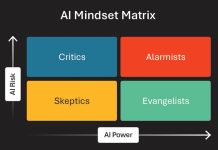Falling short of sales goals can be a painful signal that your team needs additional training. But how do you, as a sales manager, assess specific training needs? Not by yourself, experts caution.
By beginning a training needs assessment at the boots-on- the-ground level — that is, asking your reps what they want to learn to improve their performance — you engage your entire team and foster a collaborative approach to getting better collectively. Such an approach will not only bolster your learning program, it will transform your entire company culture, says Frederique Campbell in a blog post for 360Learning.
Campbell adds, not only is it a good idea to have your team members help identify the key skills to train on, it’s also wise to have them create a good deal of the training content. According to the Panopto Workplace Knowledge and Productivity Report, employees spend an average of 5.3 hours per week looking for information a peer could readily supply.
“Turning your employees into subject matter experts also keeps their skills sharp and promotes higher employee engagement, which, in turn, boosts employee retention,” she states. She recommends these strategies for determining what skills to train on:
- Surveys and questionnaires – Ask what skills they want to learn, how they like to learn, and in what areas they want more support following training.
- Interviews – Managers can dig deeper in one-on-one meetings and catch nuances that surveys miss.
- Job task analysis – Breaking jobs down into separate skills required to accomplish them helps ensure that training is aligned with job requirements.
- Focus groups – As the saying goes, there are no bad ideas in a brainstorm. Bringing small groups together gives team members a chance to hear what others think and possibly spot their own blind spots. Also, it reinforces camaraderie.
- Performance metrics – Numbers don’t lie. Analyze every statistic that’s important to you. Examples include conversion rate of leads to meetings, sales cycle length and customer satisfaction scores.
“Empowering team members to contribute to their own needs analysis is an important part of building a culture of learning and innovation,” Campbell says.
The bottom-up approach to sales training needs analysis supports this sentiment from computer scientist and educator Seymour Papert, a pioneer in artificial intelligence: “You can’t teach people everything they need to know. The best you can do is position them where they can find what they need to know when they need to know it.”





